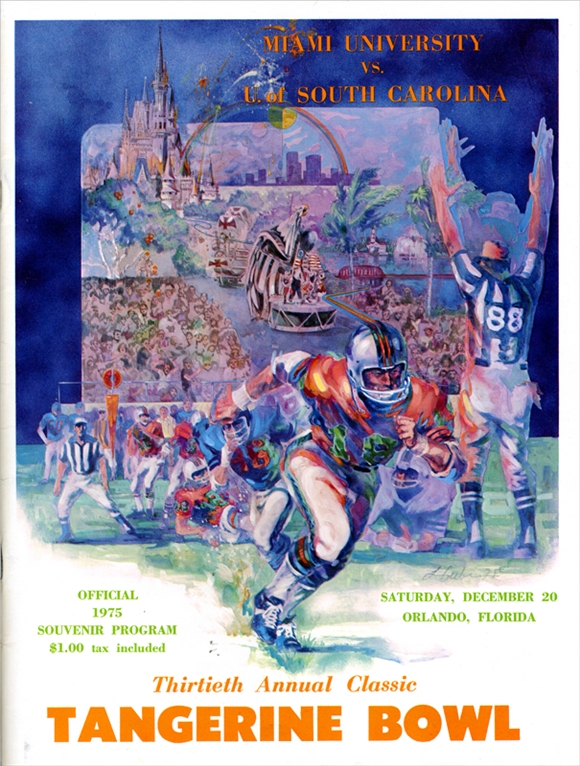
A new sound system, along with two full-color ribbon displays along the upper decks, were also added. From 1999 to 2002, key stadium improvements included the addition of contour seating, two escalators, and a new 107-foot (33 m) wide scoreboard/video screen. In 1983, the Florida Department of Citrus was added as a title sponsor for the facility, at a price of $250,000. Īfter various new improvements, and a $30 million renovation that added new concrete upper decks to both sides, a capacity of 65,438 was established in 1989. The infamous steel east upper deck was dismantled in May 1980. The city finally received a settlement of $900,500 from the stadium's engineers, architects, and designers, money that was soon appropriated for new improvements. Further complicating the situation was UCF's pending move to the stadium for 1979. The maligned stadium's reputation was heavily tarnished after the upper deck scandal, criticized by public officials, media, and fans. Meanwhile, unsightly I-beams installed to hold up the upper deck now blocked seats in the lower deck that were previously unobstructed. Additional problems included inadequate access to restrooms in the upper deck, gaps between the sections which required obstructive fences, and the fact that the upper deck was built at such an angle that it had poor sight lines. While it was believed that the upper deck was structurally sound and met building codes, it nevertheless was deemed a failure. Before long, engineering evaluations, as well as legal investigations, uncovered numerous missteps, rushing, and cut corners in the stadium's design. The swaying was so pronounced that some fans vowed never to sit in those seats again, while some refused to return to the stadium at all.

The swaying and shaking was noticeable again about a month later during the 1976 Tangerine Bowl game. The deck vibrated, fences and railings shook and creaked, causing an unnerving sensation for the patrons sitting in those sections.

During the game, the newly-constructed upper deck noticeably swayed whenever fans stood up and cheered. On November 27, 1976, the first major game was held at the expanded stadium, a regular season matchup between Florida and Miami.

However, shortly after completion the project proved to be a public fiasco and potentially an architectural and engineering failure. 5,000 more seats were added in 1968, along with the first press box.įrom 1974 to 1976 an expansion project raised the capacity to 50,612, including a 3,600-seat upper deck on the east sidelines. During this period, the stadium was known as the Tangerine Bowl. Catawba defeated Maryville 31–6 in the inaugural Tangerine Bowl. The first college football bowl game was played on January 1, 1947. The stadium opened later in 1936 with a capacity of 8,900 as Orlando Stadium. The stadium was built to the immediate east of the baseball park Tinker Field, which opened in 1914.
TANGERINE BOWL LOGO PRO
The stadium has also hosted the NFL's Pro Bowl four times.Ĭonstruction on the stadium began in 1936 as a project of the Works Progress Administration under President Franklin D. It was one of the nine venues used for the 1994 FIFA World Cup.

From 1979 to 2006, it served as the home of the UCF Knights football team. From 2011 to 2013, it was the home of the Orlando City SC, a soccer team in USL Pro. The stadium was built for football and in the past, it has served as home of several alternate-league football teams and currently serves as the home of the Orlando Guardians of the XFL. It is also the regular host of other college football games including the Florida Classic between Florida A&M and Bethune-Cookman, the MEAC/SWAC Challenge, and the Camping World Kickoff. Ĭamping World Stadium is the current home venue of the Citrus Bowl and the Pop-Tarts Bowl. The City of Orlando owns and operates the stadium. It opened in 1936 as Orlando Stadium and has also been known as the Tangerine Bowl and Florida Citrus Bowl. Phillips Center for the Performing Arts, and Exploria Stadium. Location in the United States Show map of the United StatesĢ8☃2′20″N 81☂4′10″W / 28.53889°N 81.40278°W / 28.53889 -81.40278ġ936: US$115,000 ($2.43 million in 2022 dollars )ġ989 renovation: US$38 million ($89.7 million in 2022 dollars )Ĭamping World Stadium is an outdoor stadium in Orlando, Florida, United States located in the West Lakes neighborhood of Downtown Orlando, west of new sports and entertainment facilities including the Amway Center, the Dr.


 0 kommentar(er)
0 kommentar(er)
